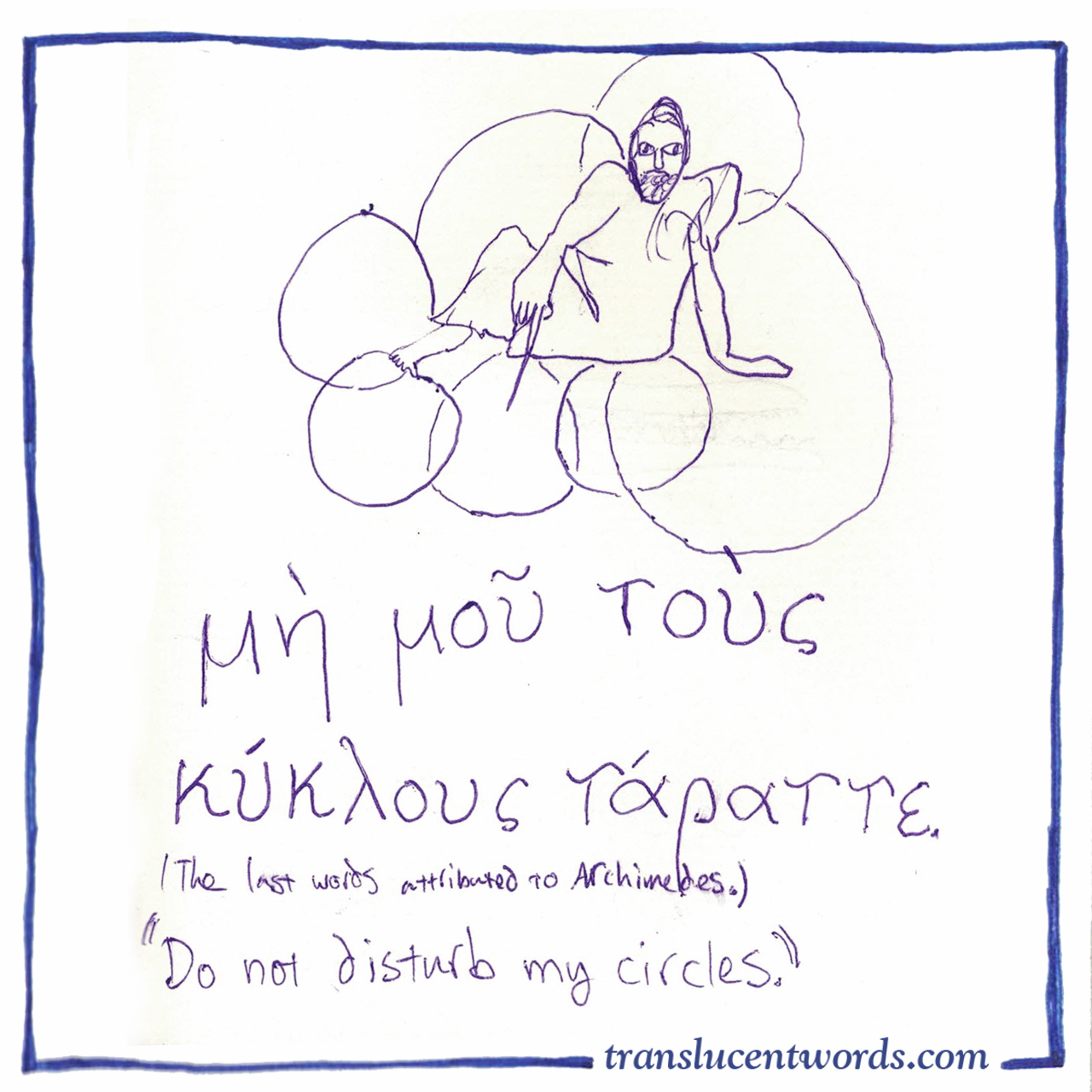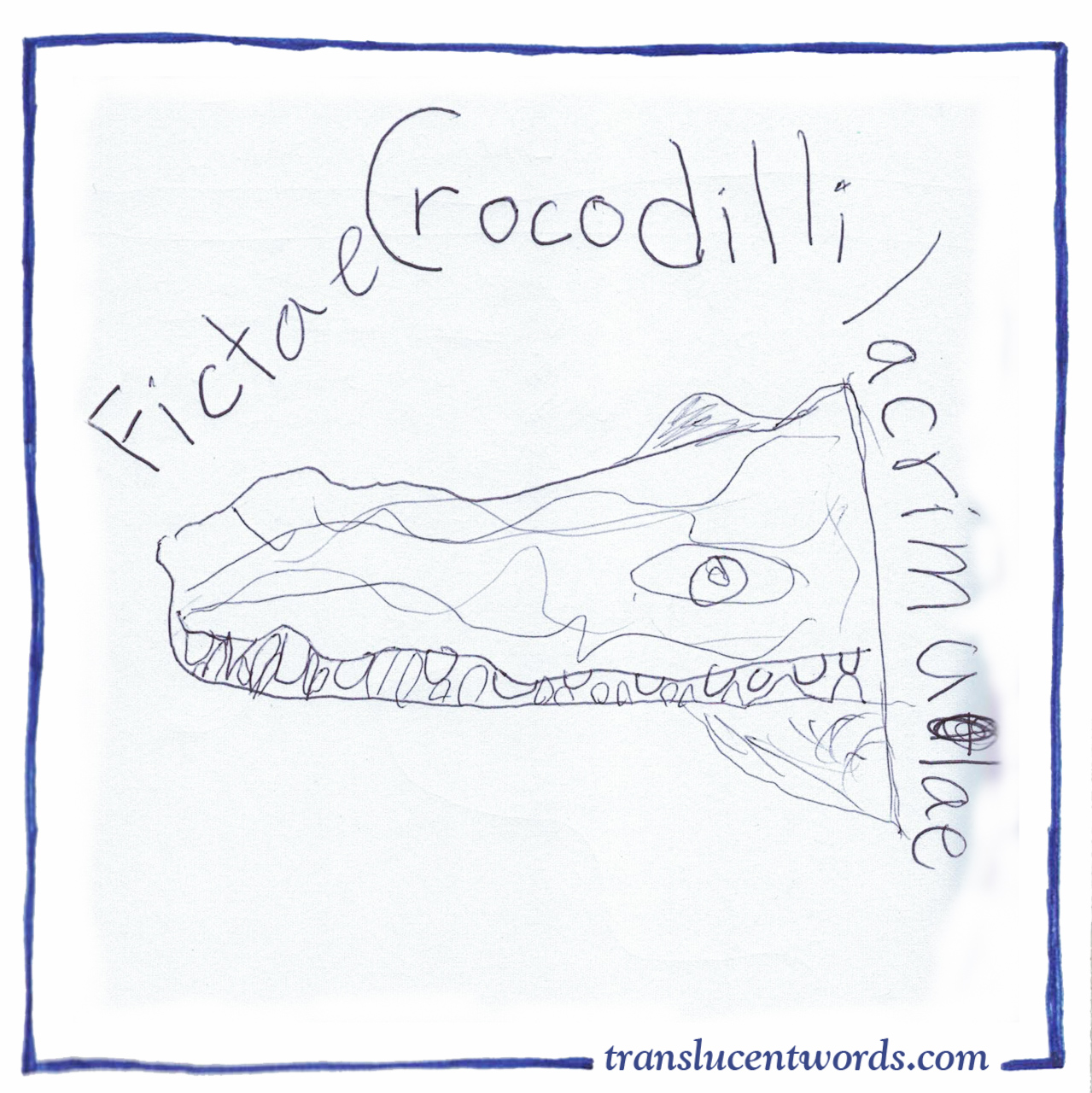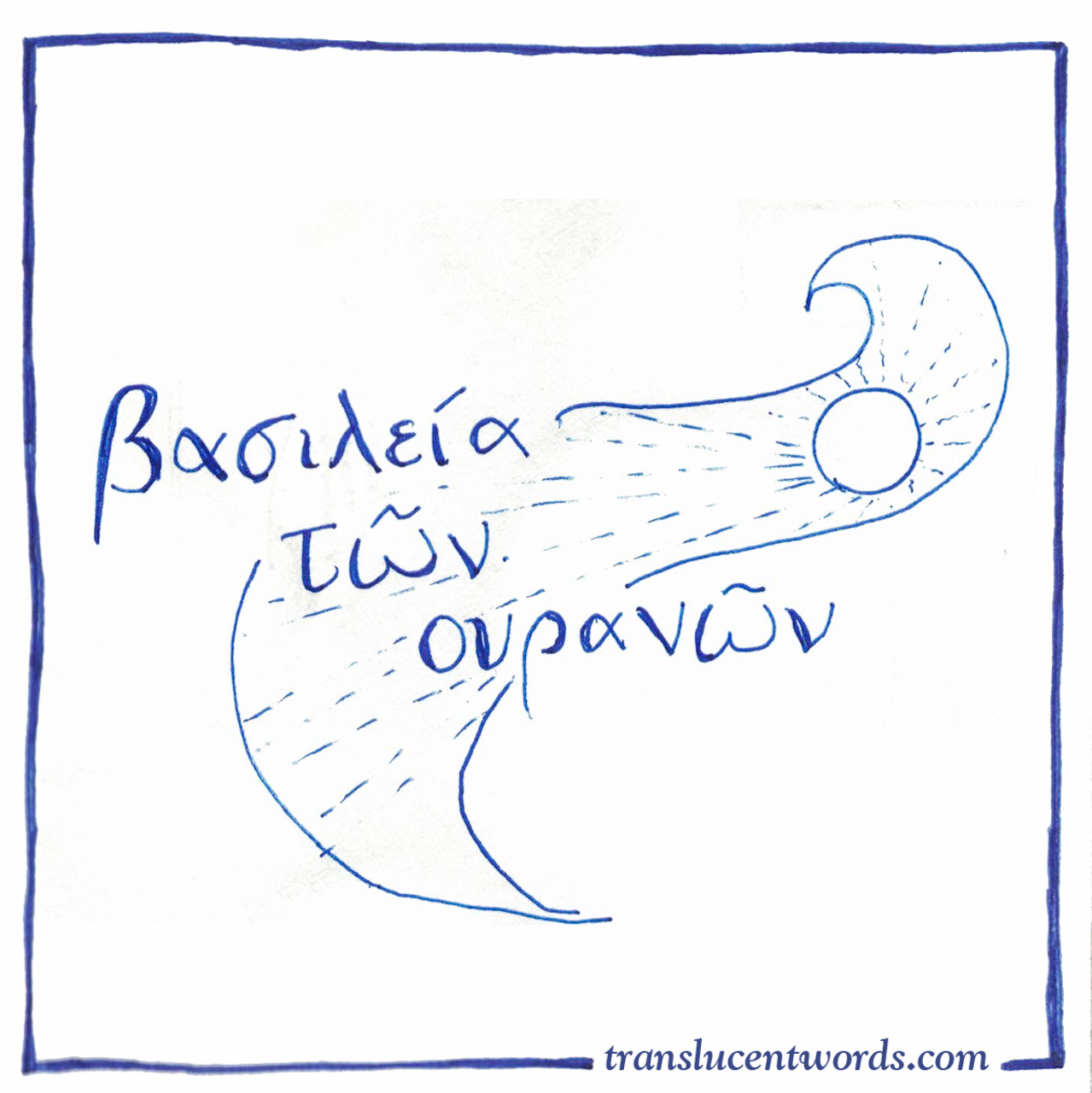What kind of foreign-language writing is simple enough to keep up every day? or even every week?
Writing in the foreign language(s) you are studying is powerful, and I have gained a lot from each “journal” I have started over the years. On the other hand, actually composing in the new language requires such a high initiation energy that I can’t say I have “finished” many such projects!
I have found a couple of ways to make this easier for my children, “scaffolding” the writing in various ways. The simplest, though, the one that gets done consistently, is just this:
Copy a Sentence in the Target Language.
This year, I pre-selected some interesting sentences, quotes, and phrases for our Greek and Latin studies, and we each copied them into our journals and illustrated them. Above, you can see one of my 14-year-old’s entries, and below is one by my 9-year-old. The third sample is from my own journal; we’ve enjoyed doing this together this year.
Copying may not seem like “real” writing. In fact, it’s truly not as powerful as thinking in your target language. But it has its place in language learning. In the first few years of a language, we need to absorb even more than we need to express ourselves or practice. Extensive, easy reading or listening is one key element, as is explicit study of grammar and vocabulary. But this experience of copying is a kind of “slow reading” that works the language into our thoughts more deeply.
Passages to copy do not need to be chosen in advance, either. This copying and illustrating technique could easily be used to keep a commonplace book with quotes from your current reading–whether it is a textbook or a work of literature. In fact, I’d like to try that approach next with our modern languages.
It’s not very glamorous, but it’s so simple it will get done. The most basic form of “thinking on the page” –in any language–is the humble act of copying.



Jaye2
Just re-read this. Super idea. I want to try it !
heather
Thanks! The great thing is that it’s so easy to start…let me know how it goes.